Newbie in Illinois with just under a ¼ acre pond - 03/09/21 03:18 PM
Hello Everyone,
My name is Ryan Dunn, and I'm the proud/daunted owner of a new (old) dugout pond in Northern Illinois. Full disclosure, I made this introduction over on the the Garden Pond Forum and was (very politely) redirected to you guys here, who may have even more expertise with larger ponds.
I look forward to digging into the weeds (sorry) in an effort to learn as much as I can about restoring and maintaining the pond I inherited last November. As winter washes through I'm getting excited/anxious/terrified about what I have ahead of me. Here are some details, though I don't know much of what they mean right now outside of guesses of logic…
- My pond has an upstream slough which sits at the base of a freight railroad line
- Its outflow runs in a gulley, through a drain under our road, and across to a larger lake
- I also spotted a drain out of the pond which is about five feet below pond level
- I inherited an aeration/fountain from the previous owner, who was not using it recently
- The pond last fall was covered in duckweed/algae
- I don't know the depths, or the best way to obtain them
- The water seems relatively clear, though the bottom seems quite mucky
- Seems like many years of leaf and plant fall created a fertile environment for the bad stuff
- I skimmed a little bit this past weekend and saw a bunch of small green sunfish, is that a bad sign?
- Last fall the pond was TEEMING with frogs. Good or bad, I don't know what is a good balance?
Some of my goals…
- Take stock of my pond, what's in it, etc.
- Learn how to maintain the pond, inflow, outflow, etc.
- On that note, learn the do's and dont's of maintaining
- Discover how this pond actually works
- Improve what I can, maintain what is working
- Learn the potential dangers/pitfalls/etc.
- Get some great ideas on what to do with it in the future
Any insights, or just "it will be ok" type replies would be appreciated. I've included a handful of images that will help you all see what I've inherited.
Thanks in advance everyone.
…ryan
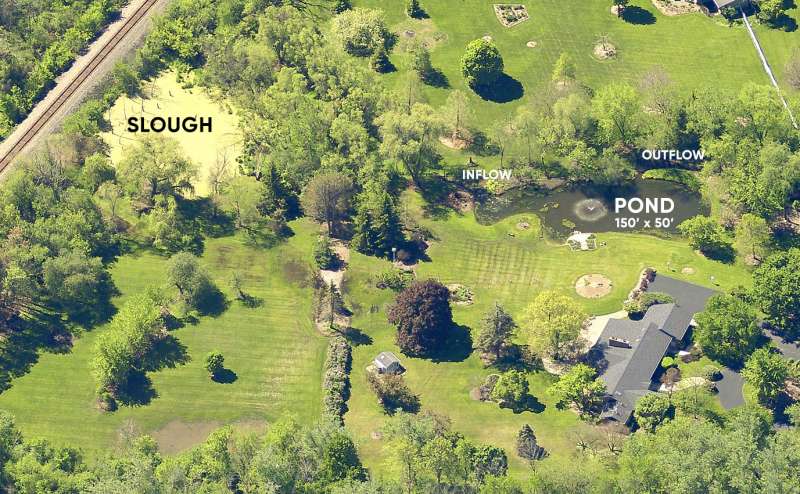

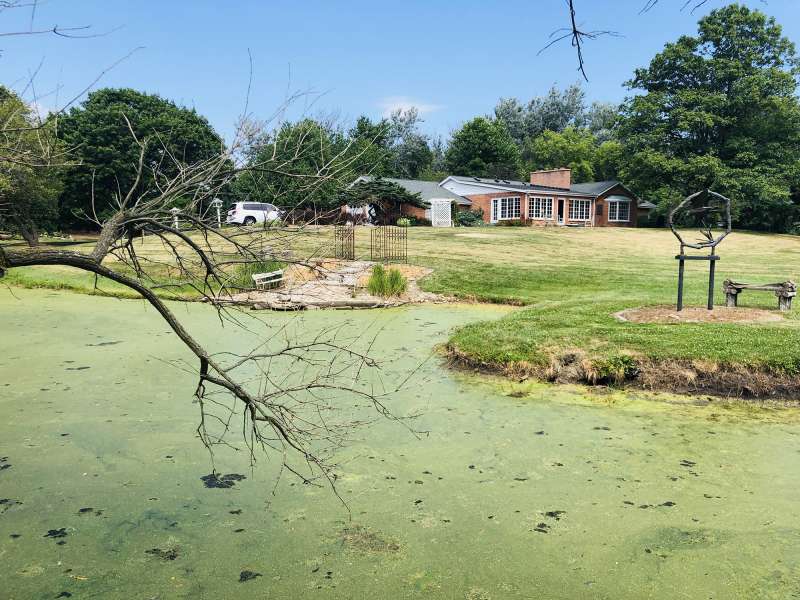
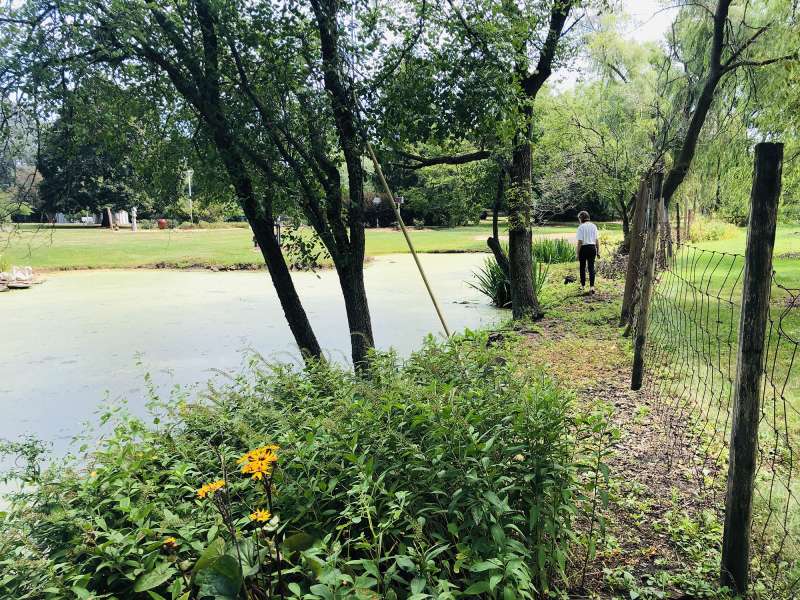
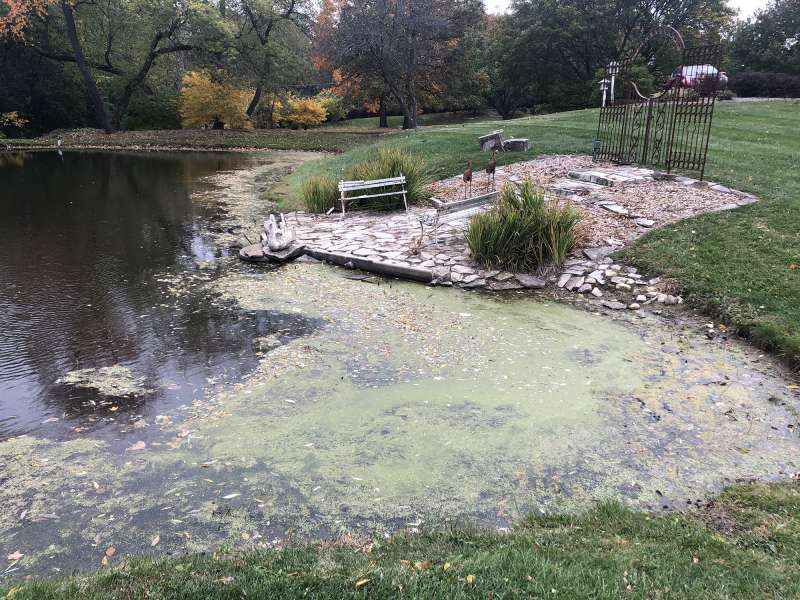

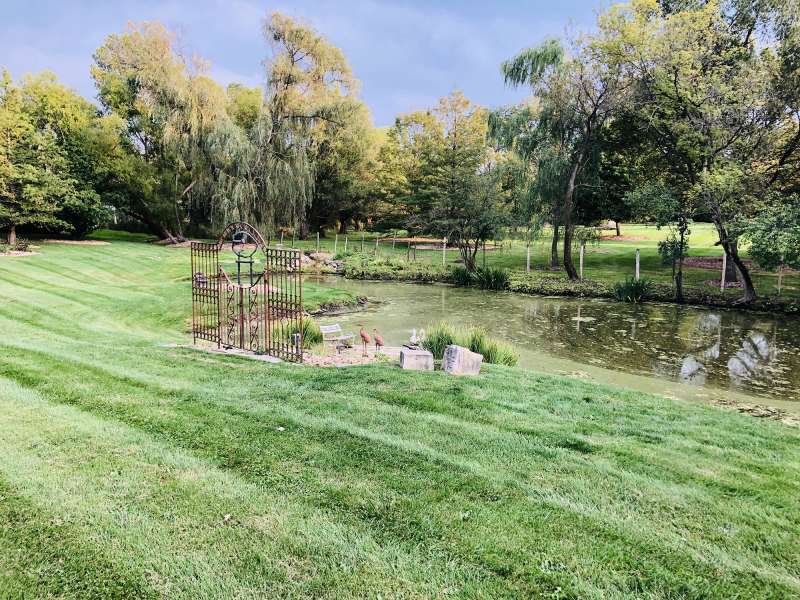
My name is Ryan Dunn, and I'm the proud/daunted owner of a new (old) dugout pond in Northern Illinois. Full disclosure, I made this introduction over on the the Garden Pond Forum and was (very politely) redirected to you guys here, who may have even more expertise with larger ponds.
I look forward to digging into the weeds (sorry) in an effort to learn as much as I can about restoring and maintaining the pond I inherited last November. As winter washes through I'm getting excited/anxious/terrified about what I have ahead of me. Here are some details, though I don't know much of what they mean right now outside of guesses of logic…
- My pond has an upstream slough which sits at the base of a freight railroad line
- Its outflow runs in a gulley, through a drain under our road, and across to a larger lake
- I also spotted a drain out of the pond which is about five feet below pond level
- I inherited an aeration/fountain from the previous owner, who was not using it recently
- The pond last fall was covered in duckweed/algae
- I don't know the depths, or the best way to obtain them
- The water seems relatively clear, though the bottom seems quite mucky
- Seems like many years of leaf and plant fall created a fertile environment for the bad stuff
- I skimmed a little bit this past weekend and saw a bunch of small green sunfish, is that a bad sign?
- Last fall the pond was TEEMING with frogs. Good or bad, I don't know what is a good balance?
Some of my goals…
- Take stock of my pond, what's in it, etc.
- Learn how to maintain the pond, inflow, outflow, etc.
- On that note, learn the do's and dont's of maintaining
- Discover how this pond actually works
- Improve what I can, maintain what is working
- Learn the potential dangers/pitfalls/etc.
- Get some great ideas on what to do with it in the future
Any insights, or just "it will be ok" type replies would be appreciated. I've included a handful of images that will help you all see what I've inherited.
Thanks in advance everyone.
…ryan






